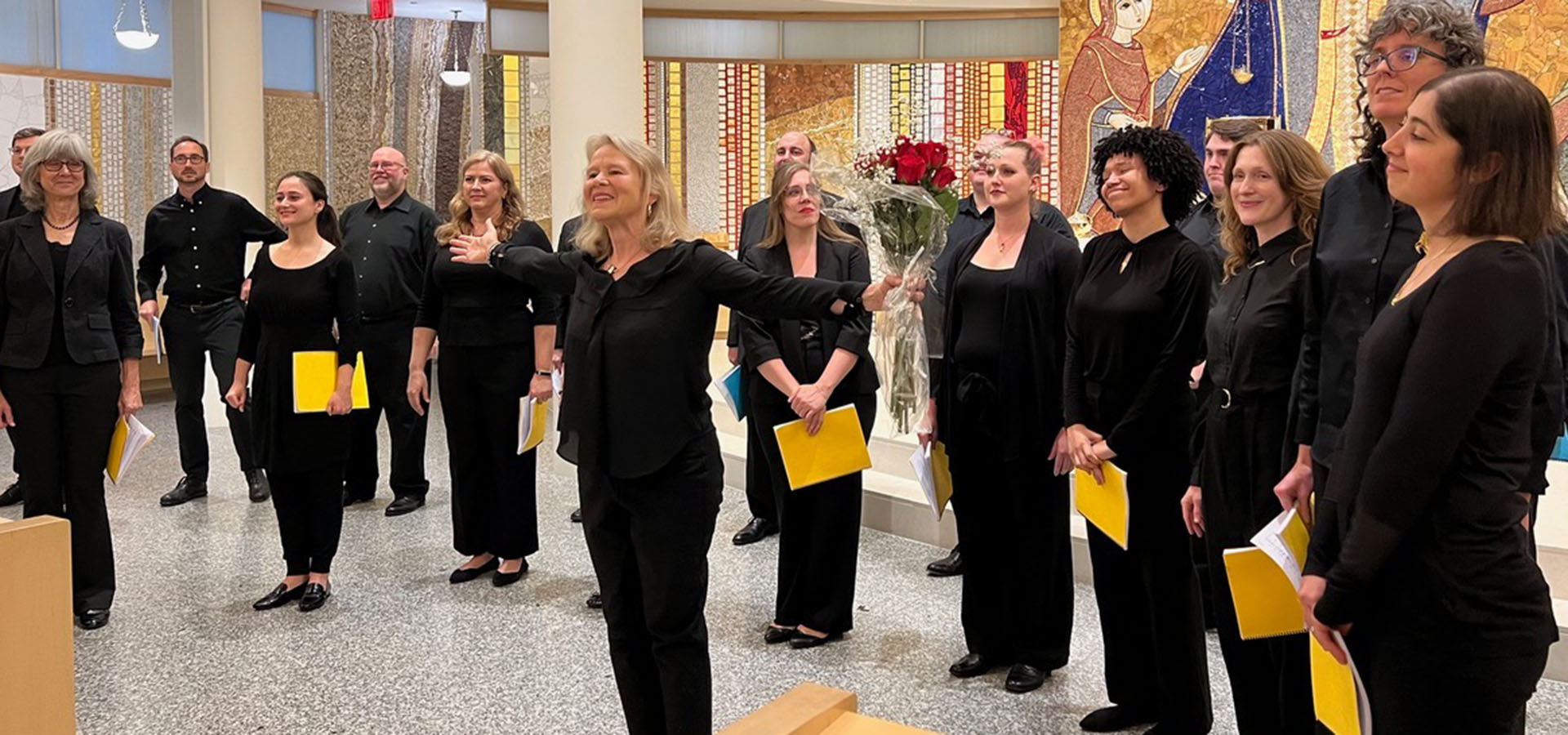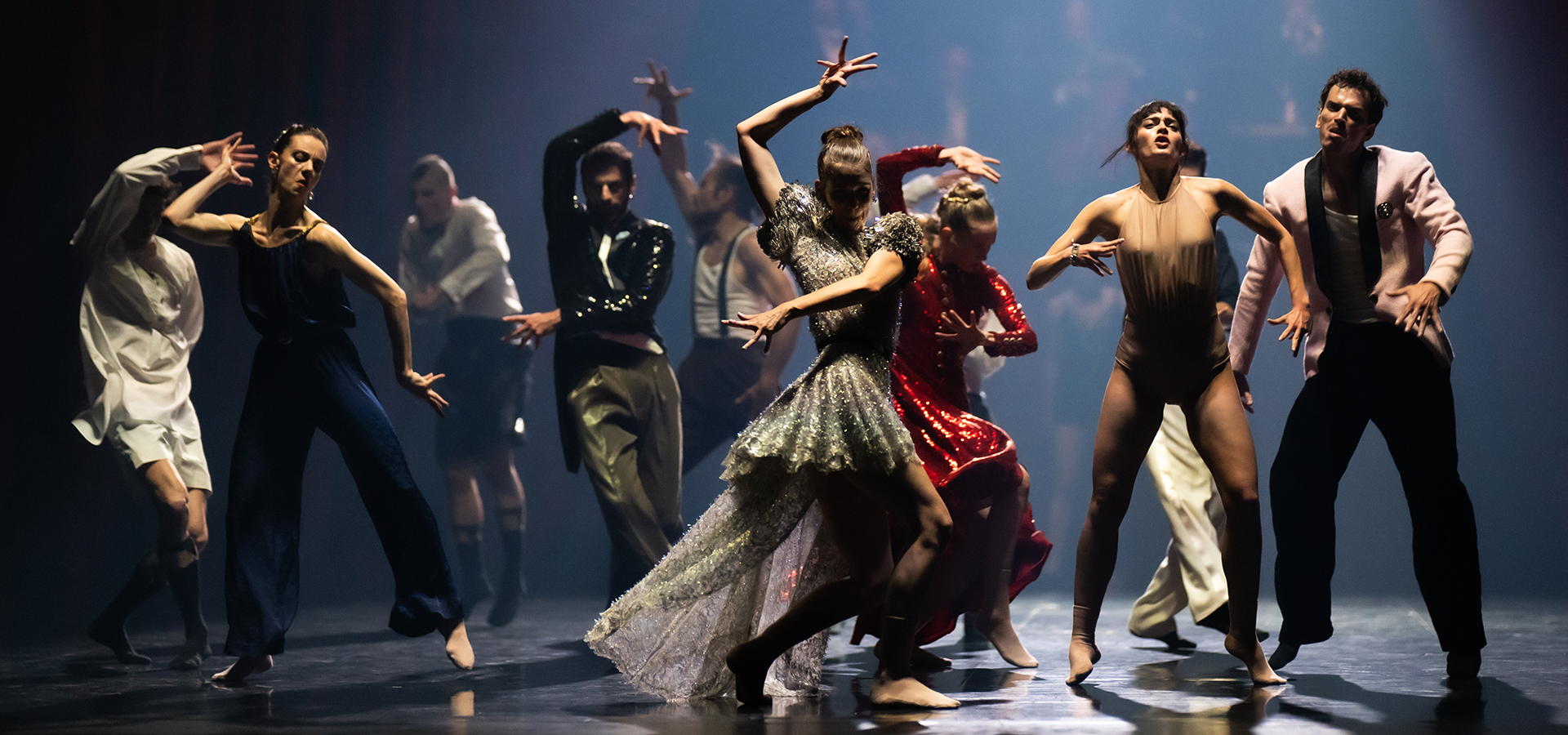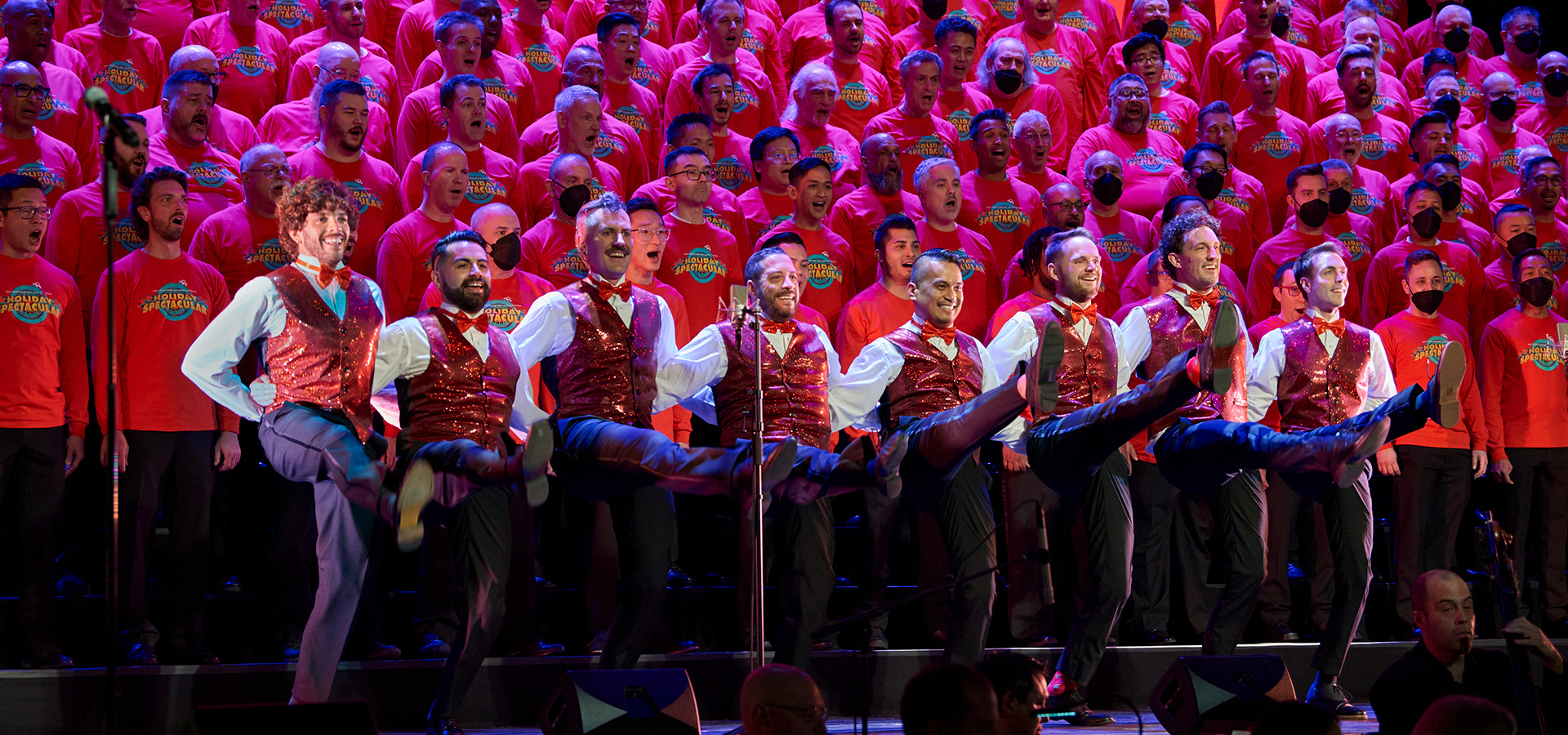
San Francisco Gay Men’s Chorus: Pioneers of a Queer Choral Movement
A voice for change.
By Krista Thomas, Cal Performances’ Associate Director of Communications
The San Francisco Gay Men’s Chorus (SFGMC), who performs with us this December, has been a powerful voice of change since its founding 45 years ago. Created by Jon Reed Sims who recruited members by way of flyering the city’s telephone poles, the group was organized with the simple goal of providing more music for the local Gay Freedom Day Parade. However, less than a month after their first practice, the chorus of already more than 100 singers was pulled toward a more serious subject.
November 27, 1978, the night of the group’s fifth ever rehearsal, marked the assassinations of Supervisor Harvey Milk, the first openly gay elected official in California, and San Francisco Mayor George Moscone. Moved by the city’s sense of loss, over 100 members of the chorus followed the candlelight vigil march onto the steps of SF City Hall and, in an emotional moment, spontaneously began singing. Just like that, the choir made their first public appearance—one rooted not just in the idea of a celebration of identity, but committed to the true work of the community, of calling for justice and working for solidarity.
Following this performance, they held their first formal concert in December. The group credits a significant portion of their publicity and resulting sold-out shows those first few years to a public standoff with the San Francisco Chronicle which, in 1979, refused to publish the cover art for their “Lovers Too” concert that featured a drawing of two men kissing. The chorus protested by blocking the entrance to the newspaper’s office and, in the end, was able to generate significant press and community support. (The Chronicle would prove to be a great ally and champion of the chorus later on!)
In 1981, SFGMC embarked on their first national tour—a costly endeavor that necessitated three SFGMC members taking out mortgages on their houses! But the investment was one that undoubtedly paid off. This landmark tour hit nine major cities across all regions of the US and is credited as the direct inspiration for many gay men’s choruses that sprung up immediately following. Lauded affectionately as the “grandfathers” of the gay choral movement, SFGMC sparked a true national (and, later, even international) trend which is still evidenced in the official histories of local groups like the Gay Men’s Chorus of Washington, DC as well as the national Gay and Lesbian Association of Choruses (GALA), which formed to help organize this plethora of new organizations.
The tour finished with a home concert in San Francisco, during which the chorus received the key to the city. And while the tour was and continues to be cause of tremendous celebration, it coincided with the very beginning of a period of great difficulty for the choir and the nation at large: The same San Francisco Chronicle issue that celebrated the group’s return also bore the headline “A Pneumonia that Strikes Gay Men.” What at this time in 1981 was positioned as a small and perplexing outbreak would, in the decades to follow, become known as the HIV/AIDS Epidemic.
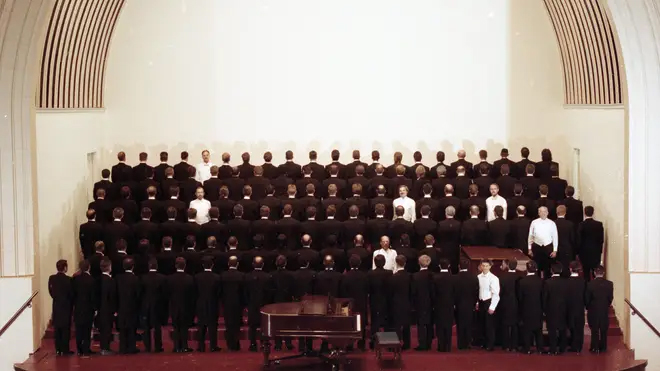
Of the 337 reported cases of HIV/AIDs in 1981, the very first year of the epidemic, nearly 40% died before the end of the year. It took years before a test was created to detect the virus and, in the meantime, the lack of information and the fear surrounding this epidemic, particularly in the gay male community, was not only physically dangerous, but mentally and socially trying as well. According to SFGMC, “As a result [of the crisis], many Americans were reluctant to interact with LGBTQ+ people because they assumed they would instantly contract HIV. Consequently, many individuals actively avoided the LGBTQ+ community altogether. In response, many LGBTQ+ individuals remained closeted.” In a time of increased isolation and loss, members of the chorus used their voices to build bridges and to retain community.
In 1987, the chorus was part of the landmark march on Washington designed to bring attention to this issue. At that time, they had lost 32 members to HIV/AIDs, including the group’s founding director in 1984. In 1993, the San Francisco Chronicle posted a sobering photo of the chorus that featured 115 of its 122 members turned around, representing the 115 members of “the fifth section” of the chorus, those they’d lost to AIDs so far. According to the Foundation for AIDS Research, the virus had killed more than 234,000 people in the US by the end of that year.
For decades, the chorus continued to advocate and fundraise for those impacted by AIDs, and even commissioned a number of moving songs to capture the tumultuous feelings of the community during this period—the first of which, “I Shall Miss Loving You,” was commissioned in 1986 and is among the first ever commission on the subject.
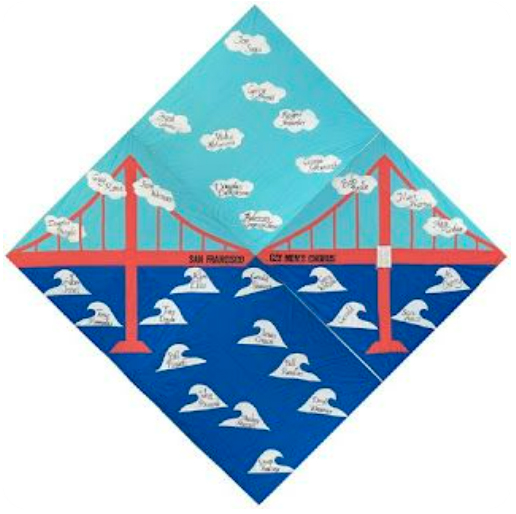
As of this year, the group has lost just over 300 members to AIDs, who have, over time, been memorialized on a special “fifth section” quilt the chorus commissioned in their honor. While AIDs detection, support, and prevention have improved dramatically in the current age, there remain over a million people living with AIDs in the US today. The chorus has continued their strong voice of activism and in 2018 established the Artists Portal Monument within the National AIDs Memorial Grove.
Though AIDs became a focus of much of their work, the group has been a voice of strength in many social justice conversations, including the fight for legalized gay marriage, in criticism of the military’s Don’t Ask Don’t Tell policy (This included a semi-staged production of the critical performance USS Metaphor in 2007.), and, most recently, as a voice for the queer community who have seen their legal protections once again challenged by politicians, particularly in the Deep South. Their 2017 tour of the Deep South with the Oakland Interfaith Gospel Choir, titled The Lavender Pen Tour, was turned into an award-winning documentary, Gay Chorus, Deep South, released in 2019. The film documents the opposition the group faced, particularly from local religious communities, and how the 300+ singers used their voice to “[bring] a message of music, love and acceptance, to communities and individuals confronting intolerance.”
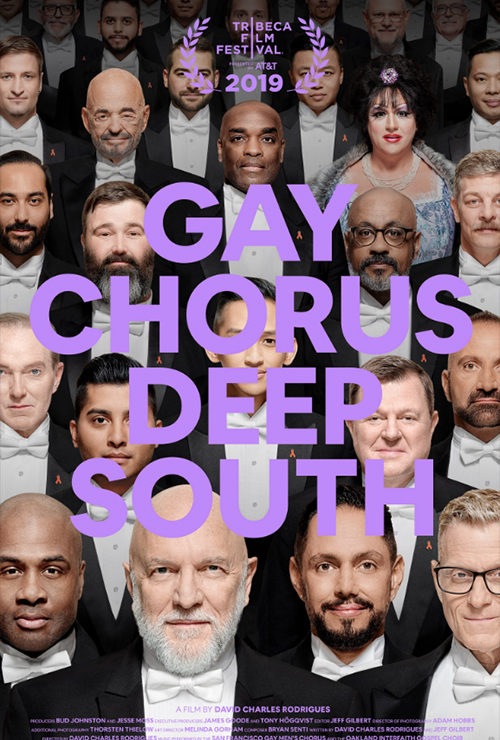
While their history is in many ways defined by setbacks the queer community has faced in the past five decades, SFGMC is anything but bitter or resigned. A recent public letter from Artistic Director Jacob Stensberg in honor of Pride begins, “Pride, like hope, should never be silent. We all have a voice: when we raise them together in harmony, love will always win.” Today, the chorus continues to focus on advocacy, education, and joy, through their concerts; through their benefit efforts; through the numerous educational resources on their website, which include articles on how to “come out” and understanding pronouns (as well as inspiring videos with LGBTQ+ celebs and allies, such as our upcoming performer Kristin Chenoweth!); and their active youth program, RHYTHM, for which chorus members visit local schools to deliver a message of acceptance and to combat isolation and bullying.
We at Cal performances are delighted to have the opportunity to be part of their holiday concert series, which has been a beloved hallmark of their programming since the group’s founding! As we anticipate this performance celebrating the LGBTQ+ community, we also want to take a moment to reflect on what it means to be a supporter, an ally, and an effective community member during Pride month and beyond.
Said Stensberg, “June is our annual reminder of the importance of taking pride in ourselves and the progress we’ve made. It is also a time when we—both LGBTQ people and allies—recommit to the causes and communities who continue to suffer under an unjust society.”
We invite you to learn more about SFGMC and their incredible mission, as well as to look at their resources, at sfgmc.org.


